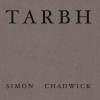

|
I know of four pieces of instrumental music said to have been composed by Raghnall Mac Ailein Òig. They form an interesting group with some shared characteristics1:
An Tarbh Breac Dearg (the red speckled bull),
A’ Ghlas Mheur (usually translated as the finger lock),
Maol Donn (sometimes called MacCrimmon’s sweetheart),
and
a’ Bhòilich (the Vaunting).
All four pieces are played nowadays in the living tradition on the Scottish Highland bagpipe; they are part of the pipe music genre known as pìobaireachd, pibroch, or ceòl mór.
All four of these pieces of music were first written down in the late 18th or early 19th century, as part of a general movement to transform pibroch from an oral tradition to a literate tradition2. All of them follow the usual pibroch structure by having a slow formal air (known as the urlar) followed by a series of formalised geometric figured variations of increasing complexity and intensity.
Click on a tune title for more information, references and recordings

Though all four of these tunes are nowadays generally considered to be exclusively pipe tunes, I was interested in the connections with fiddle and clarsach. The genre of pibroch is often said to have been derived from earlier harp traditions, and the genre of ‘fiddle pibroch’ is well attested in 18th century sources - the 1784 printing of A’ Ghlas Mheur being a notable example. Seeing how Ranald is said to have played pipes and fiddle and clarsach, it seemed to me that it would be a good experiment to set these tunes for the clarsach. The results are presented on my 2013 CD, Tarbh.
There is also a lament for Ranald, Cumha Raonuill Mhic Ailein Òig.
1. Hugh Cheape, ‘Patron as Performer: Lament for the Gentleman Piper’, in W. McLeod et al (ed), Bile Ós Chrannaibh, a Festschrift for William Gillies, Clann Tuirc 2010, p.67 ^
2. William Donaldson, The Highland Pipe in Scottish Society, Tuckwell 2000. ^